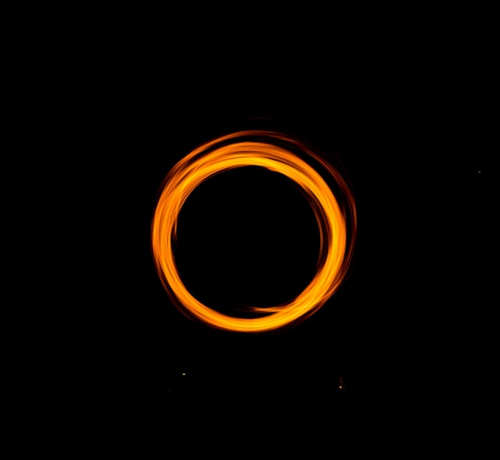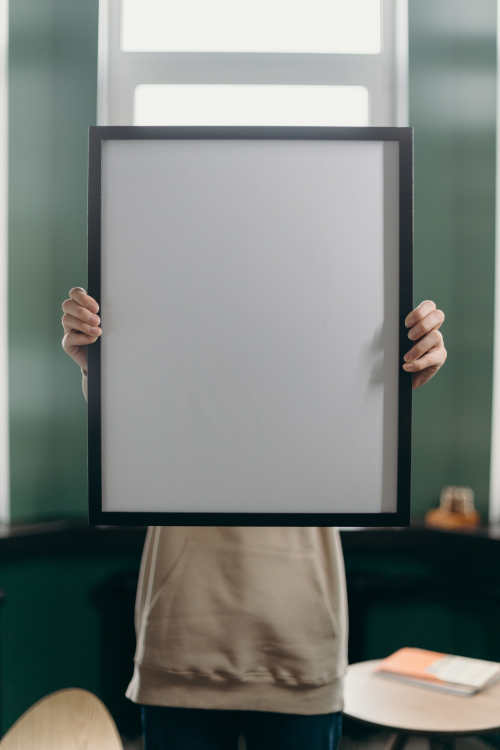If you’re updating your old resume, or if you are making a resume for the first time, odds are that you’ve seen a lot of resumes online that have photos on them. Do you also need a photo on your resume?
That’s a pretty important question to ask. Why? Because adding a photo can really hurt your chances of getting a job. Sometimes it can really help you. But either way, it’s not going to be a neutral decision.
What I wanted to do here was spend a few minutes discussing the pros and cons of adding a photo on a resume. Because it’s not something that should be done automatically without considering the implications.
Personal Photos vs Graphic Photos for Resumes
The first thing we should do is review the difference between personal photos and graphic design photos. These are two very distinct things.
Personal photos might range from a selfie to a professionally done headshot. A graphic photo is anything from a cube or rectangle to a more intricate graphic design.
Here’s an example of a graphic photo that you might see on a recent photo:

These are two distinct issues. Some people will want to have their own personal photos on a resume. That’s something we’ll discuss in more detail later.
But it’s important to be clear on the differences between a personal photo and a graphic design. Adding a fancy photo to your resume is not going to impress a recrutier.
In fact, adding fancy graphics and images to your resume might be one of the reasons why your resume is not getting call backs.
There are other photos that one might put on a resume—think decorative photos like flowers or other items—but that’s such a poor idea that everyone should just avoid that completely.
Graphic Photos on Resumes: Avoid
For the most part, graphics on resume should be avoided. You should not include images on your resume for the most part.
Now, resumes with multiple colors are it are fine. That design choice is often used by people who want a resume to stand out and have a more distinct pattern or choice.
There’s nothing wrong with that. In fact, it’s become increasingly popular in recent years to have resumes with multiple colors—dark grey, black, white, cream.
The thing you want to avoid is a resume that has large clip art like photos on it. Your resume is not where you should display your personal creativity. It’s simply not a good idea.
Employers and recruiter definitely won’t look kindly upon someone who puts a photo of a rose, or a fleur-de-lis, or something else on their resume. It’s simply not a good look to go with.
The only exception to this rule is if you’re recruiting for a position at a graphic design firm and if you’re a graphic designer.
In certain situations, graphic designers are able to skirt the boarder of what is normally considered and include images and photos on their resume. These are normally linked to their very particular job skill. It’s not something that a normal person would want to do or even be advised to do.
For instance, a person who is applying to work as a admin or back office support employee at a design firm is not advised to alter their resume in any way. Their job responsibilities will have no bearing on their ability or interest in design.
Do you Need a Personal Photo on a Resume?
Personal photos are specifically a photo of you. These are, in most cases, headshots. You do not need to have a personal photo on a resume. It’s just not something that is needed.
In the current job market it’s considered almost a requirement to have your LinkedIn profile on a resume. And it goes without saying that you should have a proper LinkedIn profile setup. You do not want to have a blank LinkedIn profile if you are looking to work in a corporate environment.
I’ve discussed the important of having a good LinkedIn profile before, but here’s another reason. If you want your recruiter or employer to know what you look like then you just have to make sure you include a hyperlinked LinkedIn link on your resume.
While most recruiters will check out your LinkedIn profile even if you don’t link to it, it would be a good idea to go ahead and put it there for the internal recruiters who work in -corporate HR who are not as proactive.
As a final note, if you are using a personal photo on your resume (or on LinkedIn) then you will want to make sure that you have a nice photo. You don’t want one that is a selfie or a cropped photo from a group photo. It doesn’t look that nice.
Some peope will tell you that a photo is one of the things you should never put on your resume.
Where Should You Put A Photo on a Resume?
If you are putting a photo on a resume, which certain people will want to do—sales executives and high profile marketing or PR—then it should go on the top left.
You don’t want to have your photo anywhere near the bottom of the resume. There’s a few reasons for this, but the general reason is that it looks bad. There are some psychological reasons for not putting your resume at the bottom of the page – studies have shown that it makes the employer think you’re not a high value person—but it’s also just a good idea to list your photo high because it’s the more common method.
One thing that you’ll learn when reviewing endless resumes is that the more similar the resume is to other resumes, the better. You don’t want to stand up so much that it makes employers admire the design and layout of your resume to the point where they think you are too much of an individual.
It’s better to look like other well done resumes than to appear to be such a unique standout that the employer begins to think that you’ll not be a good employee.
Keep your photo to the top left, keep it in a color box or color gradient section. Use a resume template that is designed to have photos. Don’t use a blank resume and then upload your image as an unformatted picture.

Hey I’m Chris . 20+ years in the industry. I’ve worked every role from Executive recrutier to Agency founder and consultant. If you want to learn more or reach me,vist the about page or use my contact form.

